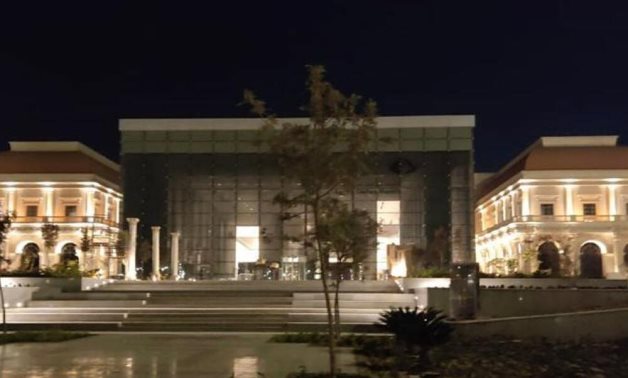
Museum of Egyptian Capitals - Photo via Min. of Tourism & Antiquities
CAIRO - 13 January 2021: Minister of Tourism and Antiquities Khaled el-Enany and Adviser to the President for Financial Affairs Mohamed Amin visited the Museum of Egyptian Capitals in the New Administrative Capital.
This visit is to follow up on the the latest progress of work inside the museum and its display scenario, in preparation for its opening.
They were accompanied by Secretary General of the Supreme Council of Antiquities Mostafa Waziry and Chairman of the Supreme Committee for the Museum’s Display Scenario Ali Omar, members of the Committee, Head of the Museums Sector Moamen Othman, General Supervisor of the museum Mona Raafat and officials from the ministry.
During the tour, the Minister of Tourism and Antiquities made some adjustments to the location of some artifacts to enrich the museum display and make it more attractive and interesting to the public.
He also requested some amends to the content of some explanatory labels in the display scenario.
Othman explained that the museum received during the past few days a number of artifacts, including manuscripts for contracts for the sale and allocation of lands, including a contract written in gold dating back to the era of the Mohammad Ali family, and a manuscript from the Coptic era depicting Saint Mark, founder of the Church of St. Mark in Alexandria, and a Quranic stand made of wood for one of the wives of Khedive Ismail.
That is in addition to a guilded Qur’an, with its pendants made of silver inlaid with precious stones dating back to the era of the Mohammad Ali family.
It is worth noting that the Museum of Egyptian Capitals narrates the history of Egyptian capitals through different eras, as it consists of a main hall in which the relics of ancient and modern Egypt, totaling 9 capitals: Memphis, Thebes, Tell Amarna, Alexandria, Fustat, Fatimid Cairo, Modern Egypt, Khedivial Cairo, in addition to displaying a group of different holdings that represent the patterns of life in each historical period for each capital separately, such as decorative tools, war weapons, the system of government and various correspondences.
As for the second section of the museum, it is a pavilion that represents the ancient Egyptian afterlife, and this part consists of Toto tomb that was discovered in 2018 in Sohag, in addition to a hall for mummies and coffins and two display cases that contain canopic jars and a set of imaginary doors and alternate heads imitating religious rituals in Ancient Egypt.
The museum display scenario includes the use of modern technology, where the exhibition halls are equipped with screens displaying an interactive panoramic film depicting history, and an illustration of each of the ancient Egyptian capitals, the nature of its architecture, its religious buildings and its most famous landmarks, to add a new creative touch so as to attract visitors.
 Egypt's Min. of Tourism & Antiquities during a tour in the Museum of Egyptian Capitals in New Administrative Capital - Min. of Tourism & Antiquities
Egypt's Min. of Tourism & Antiquities during a tour in the Museum of Egyptian Capitals in New Administrative Capital - Min. of Tourism & Antiquities
 photo via Min. of Tourism & Antiquities
photo via Min. of Tourism & Antiquities


Comments
Leave a Comment